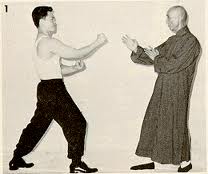skribs
Grandmaster
If a WC guy is good in protecting his center from inside out, do you think he is not interested in protecting his center from outside in?
You're already showing a style by your focus on "center".
If I can write a program in C, I would like to know what will be the PRO and CON if I can write it in C++.
I can count to 10 in English, Korean, Japanese, Spanish, American Sign Language, German, and Klingon. I am only fluent in English. Someone who can speak both English and Spanish fluently has a lot more practical language skills than I do, even though I can count in 7 languages.
What's worse, this is starting to sound like the type of person who goes to martial arts schools for 4 months and learns a bit here and a bit there, and then creates his own martial art, with no real mastery of anything. Or the guy who reads a bunch of science articles on the Internet and talks to anyone as if he's got a PHD in the subject.
There's something to be said for breadth of knowledge, but if that breadth is without depth, then it's useless.


